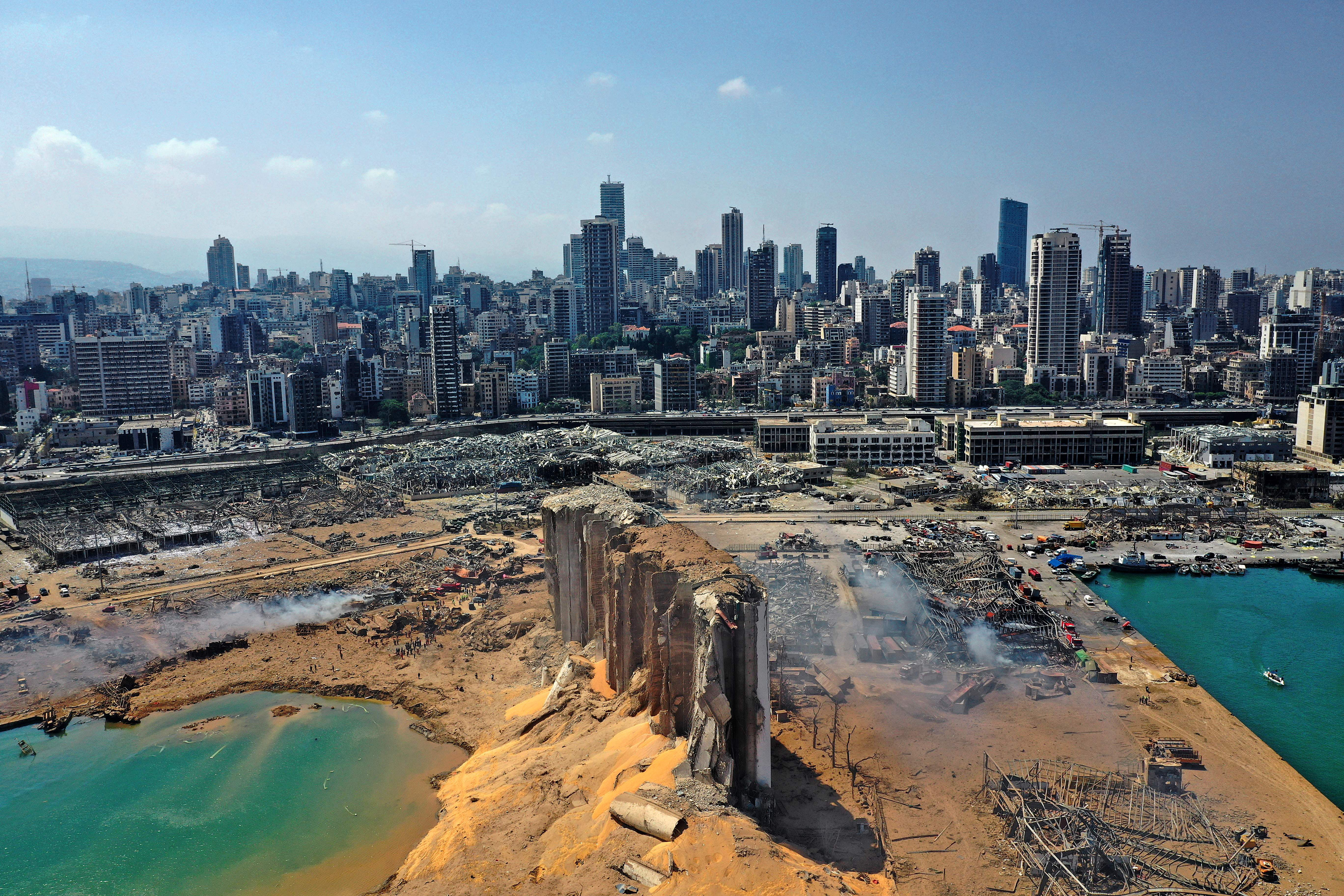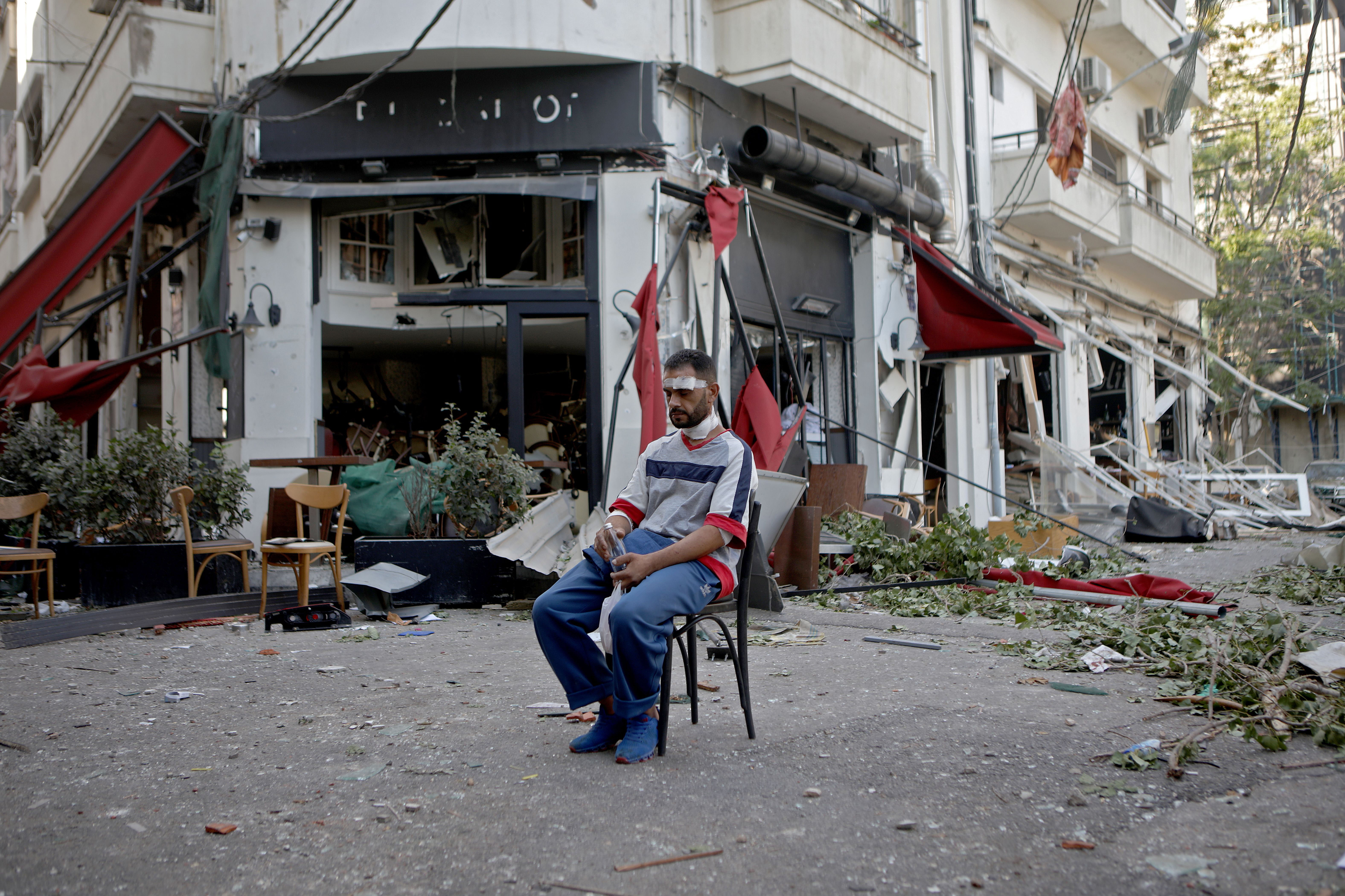Inside a home destroyed by the deadly explosion in Beirut

CNN's senior international correspondent Ben Wedeman went inside a home overlooking the port where Tuesday’s massive explosion took place in Beirut. The home was inhabited by an elderly couple.
“When the blast happened, the walls just collapsed,” wounding the woman who was in bed, Wedeman reports. She is severely wounded and in the hospital. “The bed is still stained with her blood.”
Looking out through the walls of the home that have collapsed, Wedeman describes the state of the warehouse that exploded. What was simply dry ground before, Wedeman says, is now a crater, with water flowing into the area.
The Lebanese government has committed to conducting a transparent investigation into the explosion, but Wedeman says it is “scant consolation” to the families of those killed, injured and missing.
Beirut's governor said in an interview earlier today that at least 300,000 people have been displaced from their homes by the blast.
We're still not exactly sure what caused the deadly explosion in Beirut yesterday, but Lebanon's prime minister said an investigation would focus on an estimated 2,750 metric tons of the explosive ammonium nitrate stored at a warehouse.
So what is ammonium nitrate? Also known as AN, it's a compound of ammonia and nitrogen, is a highly volatile material used in agricultural fertilizers and bombs.
Disasters involving AN are rare, considering the US uses millions of tons of it every year in fertilizers, according to the Environmental Protection Agency. "Pure" solid AN is quite stable, but if the compound is mixed with any contaminants, even in small traces, the mixture becomes much more prone to detonation — which is why there are normally stringent government guidelines for how to treat and store it properly.
"In general, the conditions of AN storage are crucial to the safety and stability of the AN. Materials co-located or stored with AN may play a role in its sensitivity to explosion," the EPA said in a 2015 guide.
For instance, AN shouldn't be stored with any fuel, organic materials, chlorides or metals, said the guide — all potential contaminants. The EPA guidelines also recommend fire resistant walls in the storage unit, noncombustible flooring, and — crucially — controlled temperatures.
AN doesn't burn, but if exposed to heat, it can melt — which releases combustible toxic gases that can cause an explosion. It's even more dangerous if there is a large supply of AN all stored together, because once a small section of AN begins to melt and explode, the resulting heat can set off the rest of the supply.
Some history: One of the worst disasters in US history involving a form of ammonia occurred in April 1947 when a ship loaded with ammonium nitrate caught fire while docked in Texas City. The fire caused an explosion and additional fires that damaged more than 1,000 buildings and killed nearly 400 people, according to the website of the Texas Historical Association.
For perspective, that explosion was triggered by 2,300 US tons (about 2087 metric tons) of ammonium nitrate, according to US Homeland Security.
And the 1995 Oklahoma City Bombing, a US domestic terror attack that killed 169 people and injured 467, used only two US tons (1.8 metric tons) of ammonium nitrate.

Every business in Beirut is impacted by the blast, economic official says


Comments